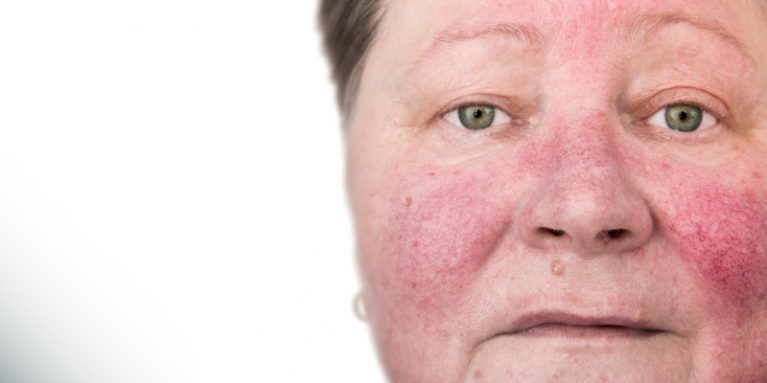Rosacea is a common skin condition that causes chronic red flushing, primarily on the cheeks, nose, chin, or forehead. This condition typically begins in adults after age 30 and can greatly decrease a person’s quality of life. While the exact causes of this condition are unclear, we do know that genetics, environmental triggers, inflammation, abnormalities in facial blood vessels, and even certain microscopic organisms can all contribute to rosacea. Luckily, there are several ways that you can better manage both superficial and underlying symptoms of rosacea. Below you’ll find the most effective tips.
Avoid Triggers
There are several environmental factors that can trigger flares of your rosacea symptoms. According to the National Rosacea Society, some of the most common triggers include:
- Sun exposure
- Dramatic temperature changes
- Stress
- Intense exercise
- Inflammatory food and beverages
- Changes in hormone levels
You can help to reduce the number and severity of flare-ups you have by avoiding these triggers.

Adjust your diet
Since rosacea is linked with chronic inflammation, adjusting your diet to remove any allergens, sensitivities, or common gut irritants can help to minimize redness and flushing. Try to avoid foods and drinks that are known to cause inflammation, such as spicy foods, coffee, alcohol, eggplant, and tomatoes.
You can also add in anti-inflammatory foods to further improve your symptoms as well as your overall health. According to Everyday Health, adding anti-inflammatory foods to your diet, like flaxseed oil, nuts, seeds, and fresh fruits and vegetables, can help to combat rosacea symptoms.
Consult with your dermatologist
Since rosacea can be such a complex condition to treat, your best bet is to discuss the various treatment options with an experienced dermatologist, such as Dr. Jessica Krant. Some treatment options for rosacea include prescription creams, dermabrasion, light therapy, and laser treatments.
Dr. Krant can provide you with an accurate diagnosis and recommend the most appropriate treatment options for your situation.
Take the first step to better managing your rosacea symptoms by scheduling a consultation with Dr. Krant today.
Jessica Krant, M.D., MPH, is a board-certified dermatologist with specialized experience in cosmetic, laser, surgical, and medical dermatology, but above all, Dr. Krant is most proud to be a caring, comprehensive physician who takes the time to listen and send her patients home with a smile.















Leave A Comment